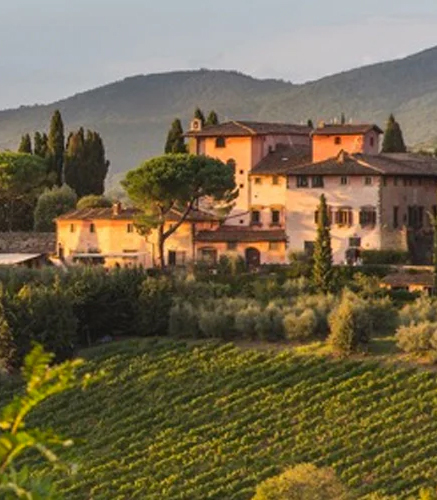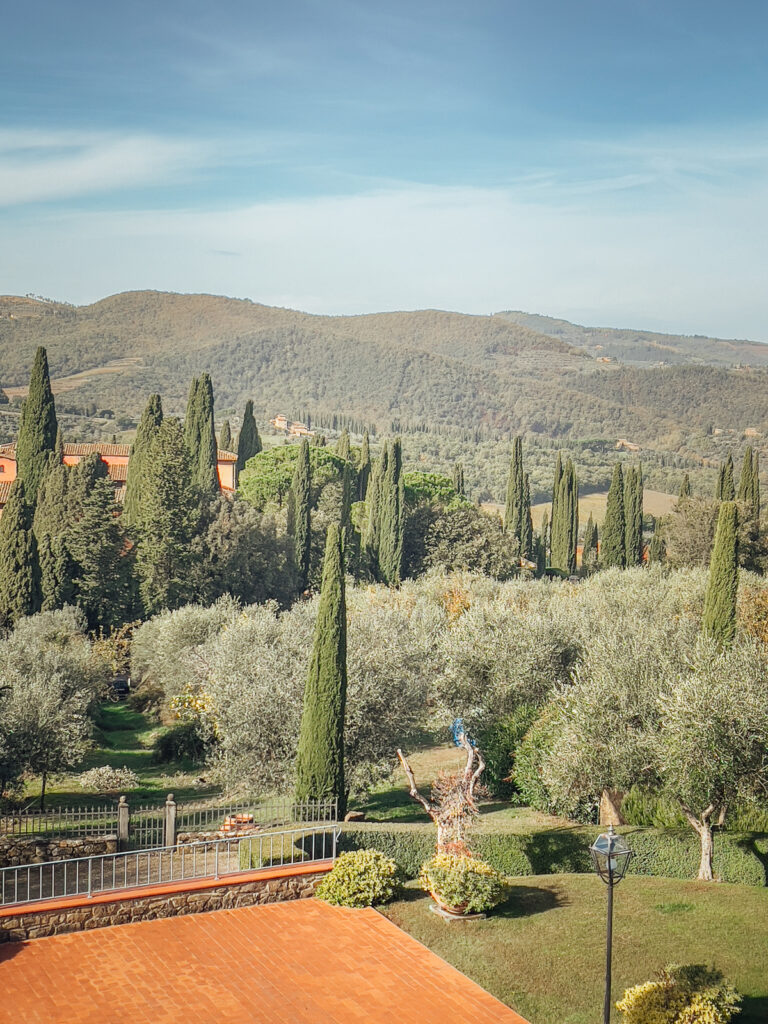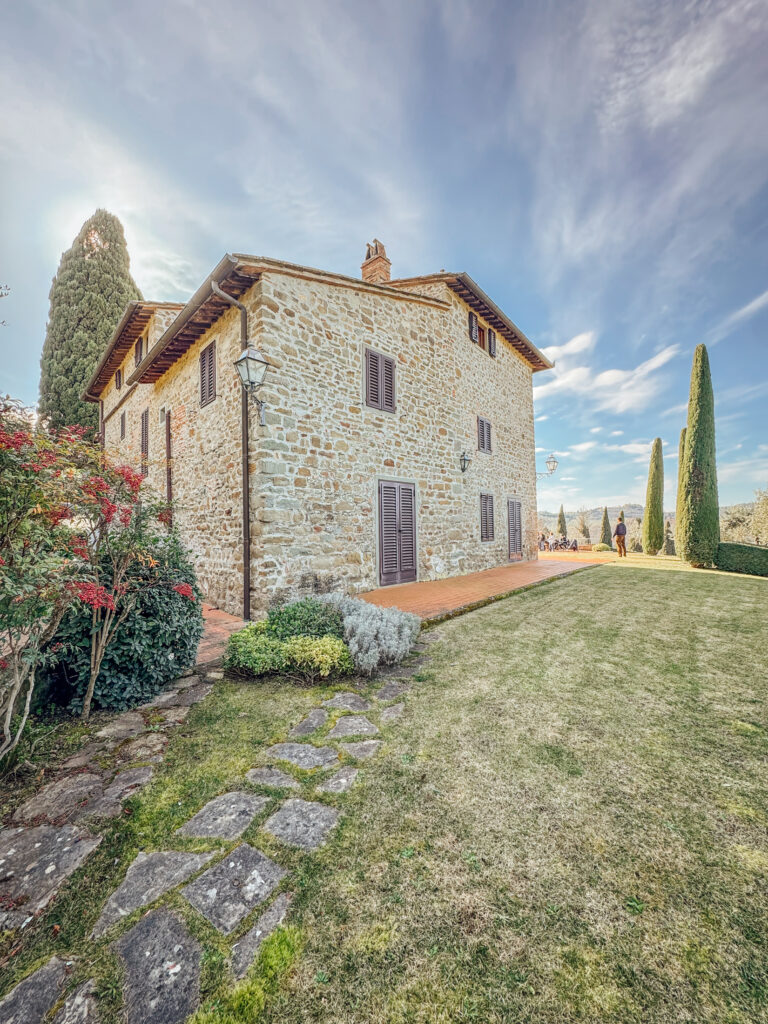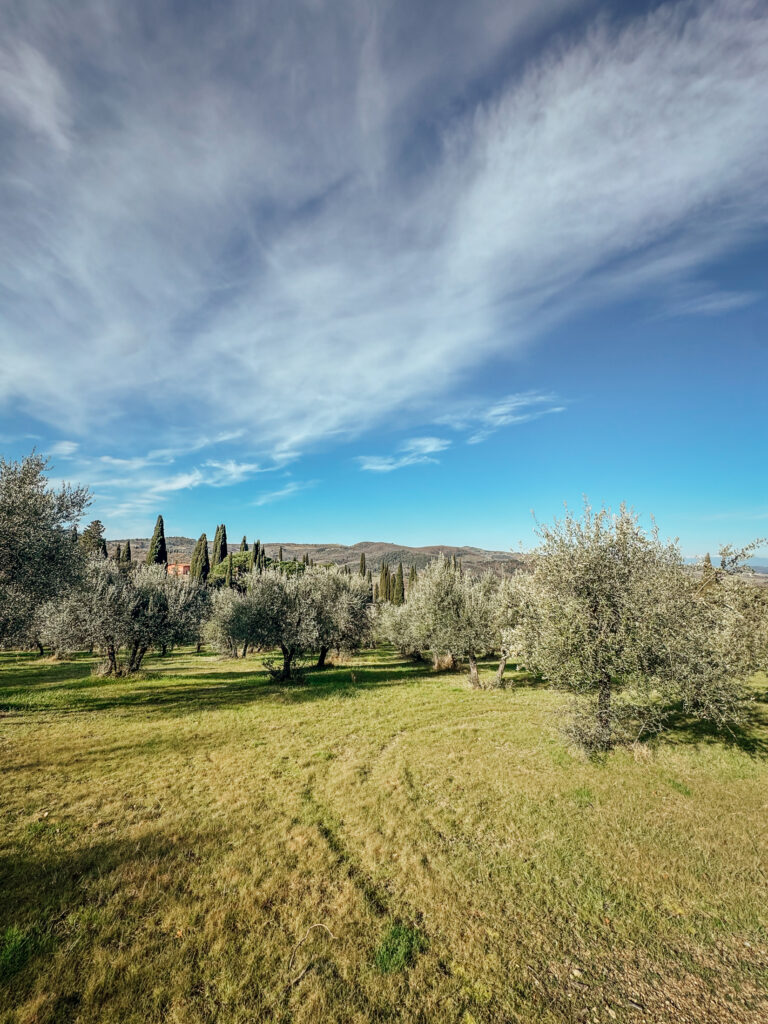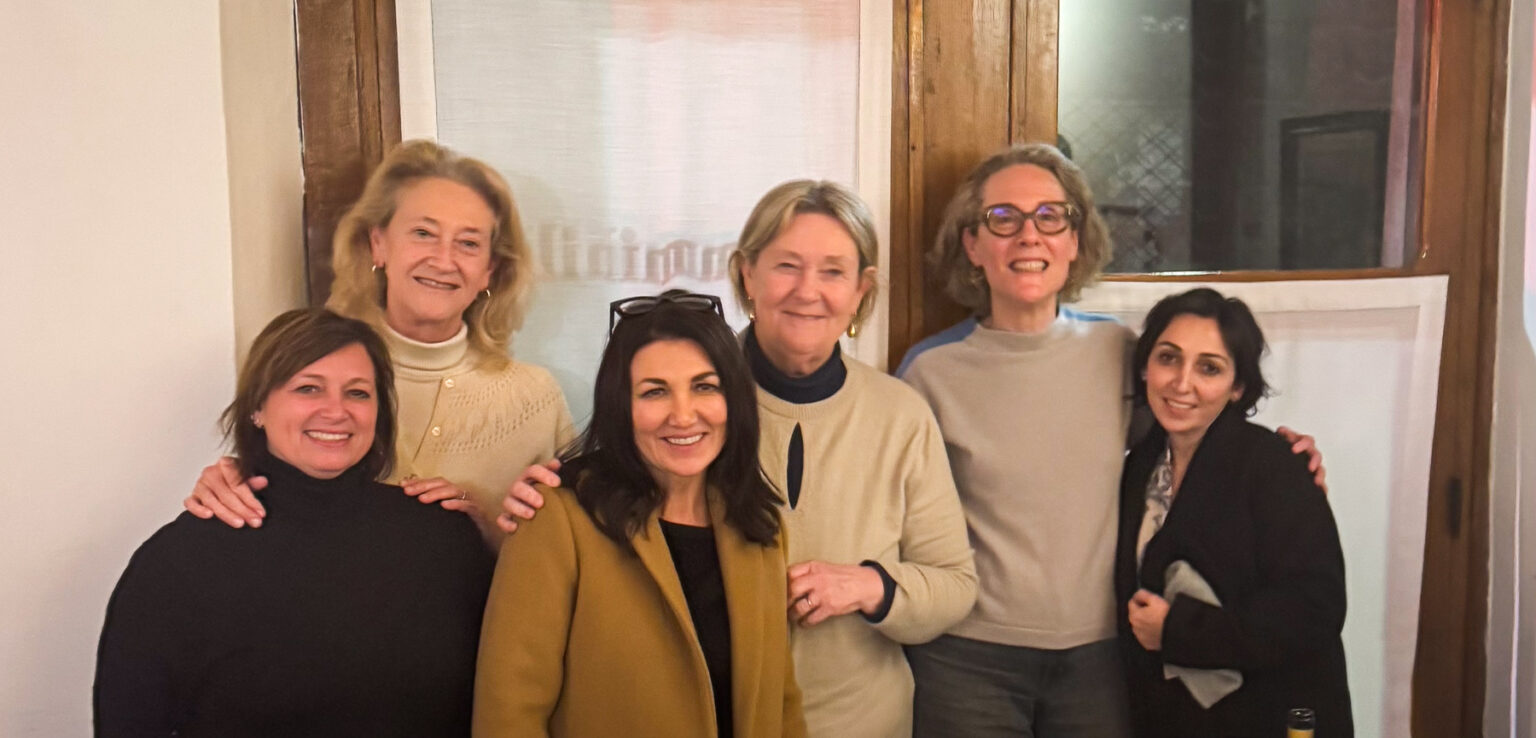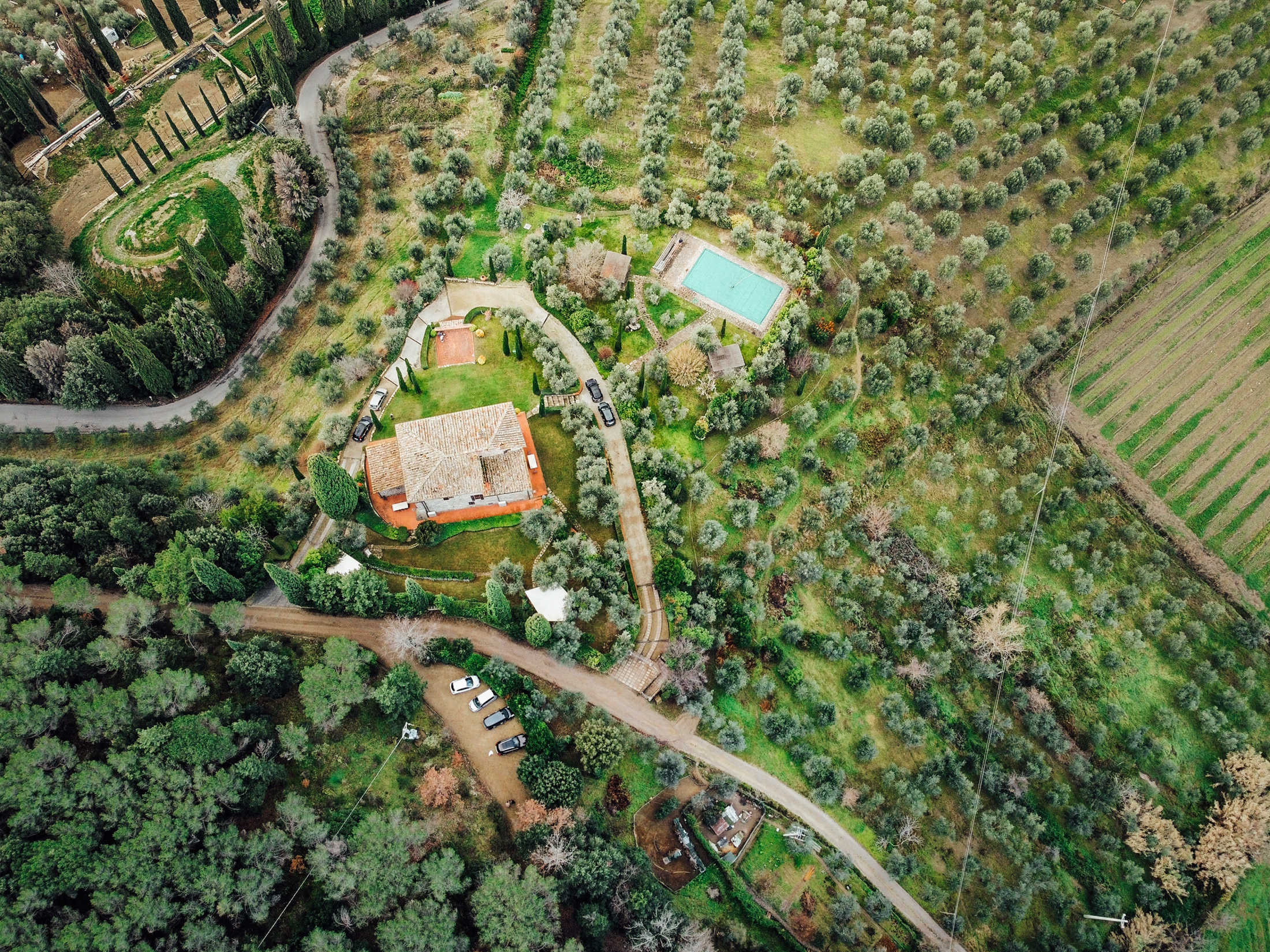
ESTATE HISTORY

Timeless Traditions
Tenuta Di Loreto and the Vignamaggio Estate
A Slice of Renaissance Italy, From Past to Present
Nestled in the enchanting Chianti countryside, Tenuta Di Loreto is not just a villa; it’s a portal to the past. Once part of the historic Vignamaggio estate, this property is enveloped by meticulously manicured Italian gardens, offering a serene backdrop that speaks to the elegance of Renaissance country life. The main structure of the villa dates back to the 16th century, providing a remarkable glimpse into a bygone era.
The Legacy of the Gherardini Family
The story of Tenuta Di Loreto is intricately tied to the Gherardini family, a noble lineage believed to trace its roots to ancient Etruscan or Roman heritage. Their initial stronghold was Montagliari, a castle perched on a hill across from Vignamaggio. From this vantage point, the Gherardini were notorious for intercepting merchants traveling to Florence, a practice that ultimately led to their downfall. In 1302, determined merchants banded together to besiege Montagliari, forcing the family to relocate to Vignamaggio, where they began constructing the villa we admire today.
One of the estate’s most intriguing connections is to the famed Mona Lisa, the daughter of Anton Maria Gherardini. Her ties to Vignamaggio are steeped in mystery—some say she was born here, others believe she was painted here, and still others suggest she spent part of her life within the walls of the villa.

The Transformation by the Gherardi Family
In 1422, after a century of financial struggles, the Gherardini family sold Vignamaggio to the Gherardi family. Despite their similar names, the two families were not related. The Gherardi transformed the estate, expanding it from a simple tower into the magnificent villa we see today. Over the next four centuries, they recognized the need for additional structures to support their thriving agricultural community, which included raising livestock like veal, cows, and pigs. It was then that they constructed Tenuta Di Loreto (formerly Villa Il Bronzino) and other stone buildings to accommodate their farmers and store animal feed, adapting the slated room from stable to living space. The Gherardi family’s stewardship lasted over four centuries, leaving an indelible mark on the region.
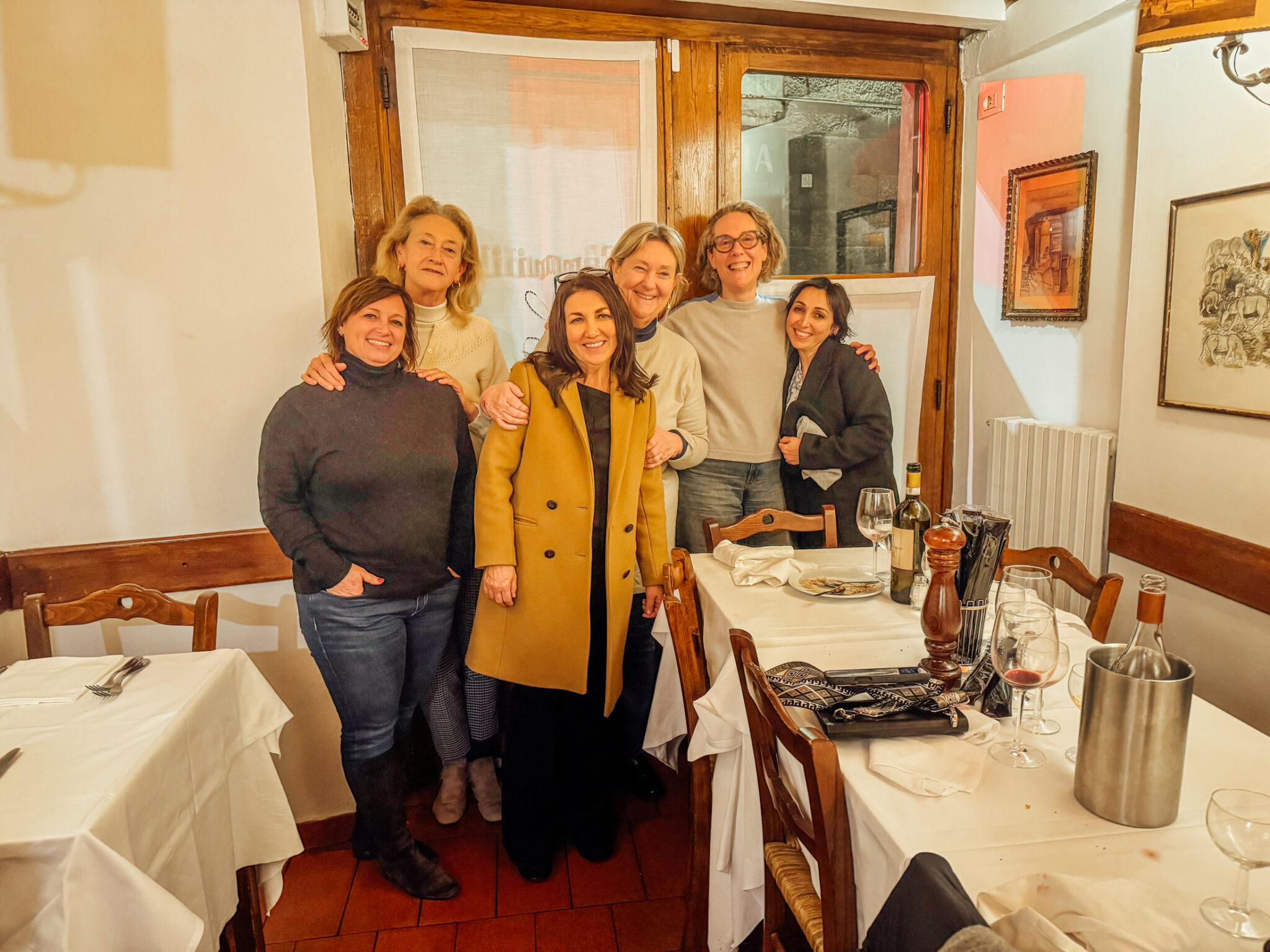
The Sanminiatelli Family’s Influence
In 1925, the estate was acquired by Count Bino Sanminiatelli and his wife, Countess Elena Sanminiatelli. Bino, a man of both literature and art, was instrumental in creating the stunning Italian gardens that surround Villa Vignamaggio today. He also transformed the villa’s façade from ashlar stone to a vibrant red, which has since faded to a soft pink. Bino hosted illustrious gatherings attended by notable figures, including members of the Rothschild family, the artist Marc Chagall, and even President John F. Kennedy. His guestbook is a testament to the cultural significance of the estate, filled with signatures of prominent visitors.
In addition to its rich history, Villa Vignamaggio is renowned for its role in film, particularly as the picturesque backdrop for the 1993 adaptation of Shakespeare’s “Much Ado About Nothing,” directed by Kenneth Branagh. The villa’s enchanting gardens and charming architecture provided an ideal setting for this beloved romantic comedy, further enhancing its cultural legacy. After Bino’s passing in 1984, the Vignamaggio estate and Tentua Di Loreto was bequeathed to his nieces, Alessandra, Elena, and Maria Cristina, ensuring that the legacy of Vignamaggio would endure.
A New Chapter

